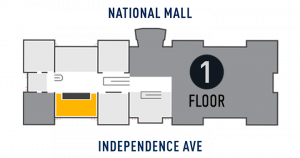A bird seeing a human face or hearing a human voice while under the staff's care could 'imprint' on humans, losing its natural fear and dramatically decreasing its odds of surviving in the wild. So when teaching the cranes to follow the ultralights, when they are around 5-7 days old, aviculturalists disguise themselves in a white smock and hood with goggles while wearing a hand puppet that looks like the head and neck of an adult crane and introduces each chick to an ultralight aircraft. The aviculturalists also bring a recorder with recorded crane brood calls to reassure the youngster. Only people wearing these costumes are allowed to get near the birds, even while flying with the flock.
Display Status
This object is on display in Thomas W. Haas We All Fly at the National Air and Space Museum in Washington, DC.

Object Details
Type
PERSONAL EQUIPMENT-Helmets & Headwear
Physical Description
White fabric hood with attached plastic googles and mesh
Dimensions
Clothing (On Mannequin): 38.1 × 25.4 × 25.4cm (15 × 10 × 10 in.)
Materials
Fabric, Plastic, Elastic, Foam
Inventory Number
A20060594006
Credit Line
Gift of Joseph Duff Operation Migration.
Data Source
National Air and Space Museum
Restrictions & Rights
Usage conditions apply
For more information, visit the Smithsonians Terms of Use.